The "Thrasher Spot" at Baseline Road/Salome Highway
Fast Flight Facts
Target Species: Le Conte's, Bendire's, and Crissal Thrashers, Sage Thrasher in migration, and Sage Sparrows in winter
Elevation: 910'
Habitat: Saltbush desert with scattered mesquites and paloverdes
Overall Birding Rating: 5 (Top 10 Maricopa County Hotspot)
Difficulty: 1-2 (Easy to Fairly Easy)
Birding Type: Easy Hiking
Facilities: None
Fees/Ownership: None/Public access
Closest Town or City/How far from Phoenix: Buckeye /40.5 miles west-southwest of Phoenix
Getting there: Good thrasher habitat surrounding the intersection of Baseline Road and Salome Highway
Overview: This site, known as the "Thrasher Spot" is famous in the U.S. for seeing the Le Conte's Thrasher. The Thrasher Spot is located at the intersection where Baseline Road meets the Salome Highway. It is open desert habitat with saltbush, and some mesquite and paloverde trees. The site is excellent for viewing the Le Conte's and other thrashers, as well as the common desert birds.
The pale-colored, elusive and shy Le Conte's Thrashers may be observed year round, and should be found on most visits by walking around with patience. They are more easily observed in January and February as they begin nesting, and the males are more likely to be up singing. They prefer the more open desert where creosote bushes are more dominant. A good strategy would be to walk around in these habitats until a thrasher is seen or heard, which can take anywhere from a few minutes to a few hours. They are usually seen first as they run on the ground at a fast speed, as they will pause briefly before continuing the run on the ground. The Le Conte's Thrasher covers a good distance and will disappear just as fast as they are located. Some birding outings may have to result in quick glimpses. They also like to perch on a medium height bush or tree (often in the middle or on top) if there are saltbush nearby. Often when spooked, the Le Conte's will run and jump up briefly to a branch of a higher than ground level perch to look for what spooked them, before returning back into the ground cover. They also have a soft and high-pitched call which helps locate them, which sounds a little similar in tone to a Phainopepla, but much dryer and lower.
Other neat thrashers can be observed at this site in all seasons, including the Bendire's and Crissal Thrashers, they can both be found with regularity too. The Crissal and Bendire's Thrashers will sing throughout the Thrasher Spot during the breeding season, and they can be seen with great, open views as they perch atop taller trees and sing away. But just like Le Conte's, the Crissal Thrashers can be very elusive too. When watching the birds sing, keep a distance as they rarely allow a very close approach. Bendire's can be approached to a closer distance. Both Crissal and Bendire's can be found in the areas where there are more paloverdes and mesquites, as they don't prefer the open habitat as much as the Le Conte's does. Sage Thrashers are also seen here in the winter and migration, with the most reliable time being in March, as they are passing through in higher numbers for migration.
Besides thrashers, other good birds to be seen here are both Bell's and Sagebrush Sparrow, which winter in the area, being present from mid-October through early spring. These sparrows sometimes behave like a thrasher would, as they run on the ground as well and raise their tail while doing so. These two species were both split from the Sage Sparrow species into two. Other birds to keep an eye out for here include the rather common desert birds (which out of state birders from the east would really enjoy), such as Gambel's Quail, Ladder-backed Woodpecker, Verdin, Black-tailed Gnatcatcher, Northern Mockingbird, Loggerhead Shrike, Abert's Towhee, and Black-throated Sparrow. The Mockingbirds are mimics just like the thrashers, so every mimic song that is heard can very well be a mockingbird too. The area is also good for raptors in winter, such as Northern Harriers and Sharp-shinned Hawks.
Birding Tip: There are good parking spots on both sides of the Salome/Baseline intersection. When birding, take your time and be patient. Good looks are most likely to be rewarded with a lot of patience while visiting this site. A Le Conte's Thrasher is very likely to show itself eventually if one stays in the right habitat. Bird in the more dense areas with larger trees and taller vegetation for the other thrashers. IMPORTANT-Le Conte's Thrashers are limited breeders in Arizona and are likely to be more sensitive, do not play tapes here.
Directions: The most reliable way to get to this spot would be to take the I-10 to the Highway 85 exit. Drive south for almost four miles and then turn right (west) on Baseline Road. Continue west until the Salome Highway is reached after about nine miles. You can park just off the road (a small dirt road runs north) where Baseline Road ends or you can turn left onto the Salome Highway briefly before parking off the road and walking south into the other side of the road, which this side is usually more productive overall.
Pages:
The "Thrasher" Spot Maps
Baseline Rd./ Salome Highway "Thrasher Spot" eBird Data
Scenes and Sights from The "Thrasher Spot" at Baseline Road/Salome Highway:
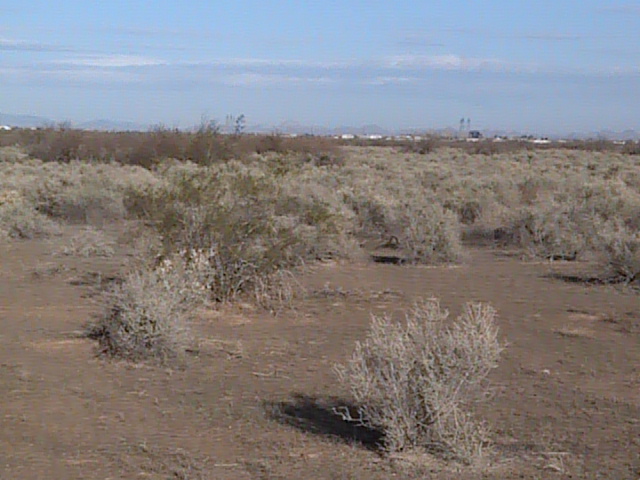
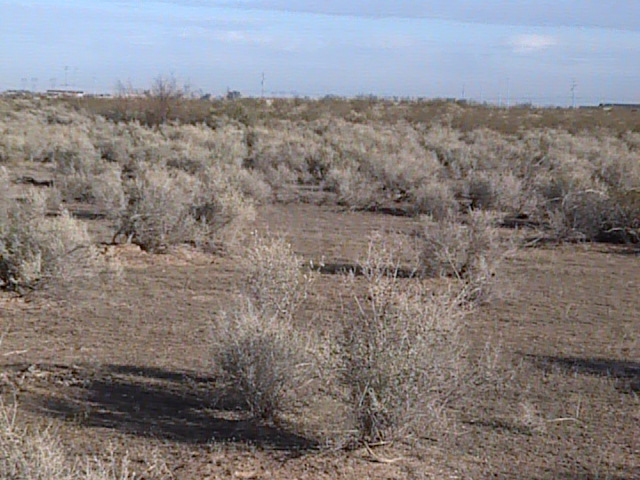
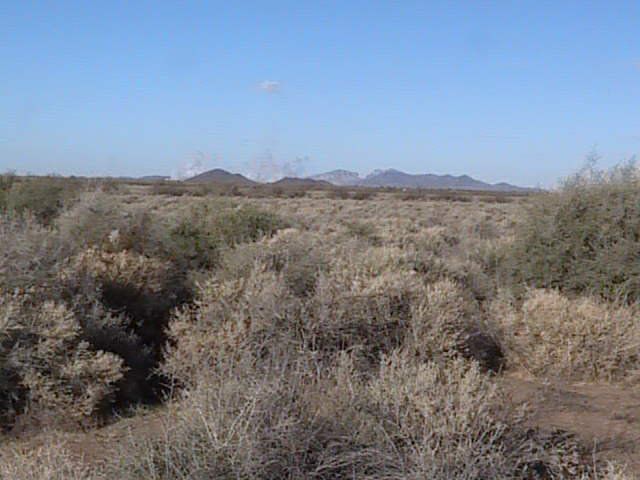
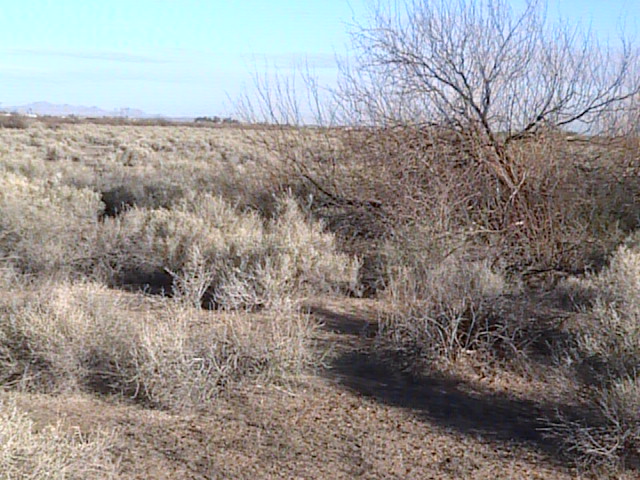
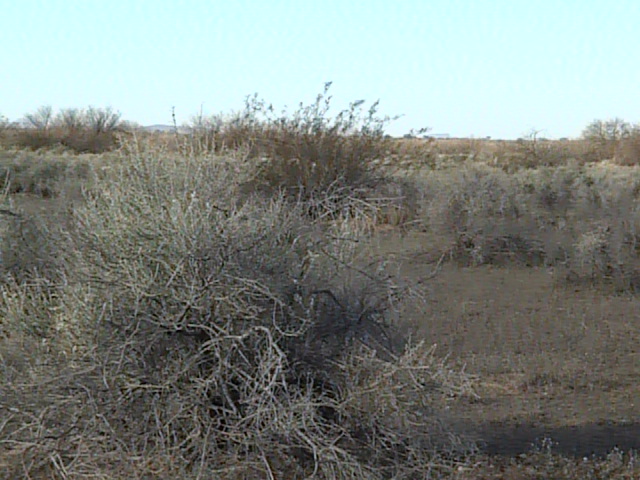
Baseline Road/Salome Highway intersection...
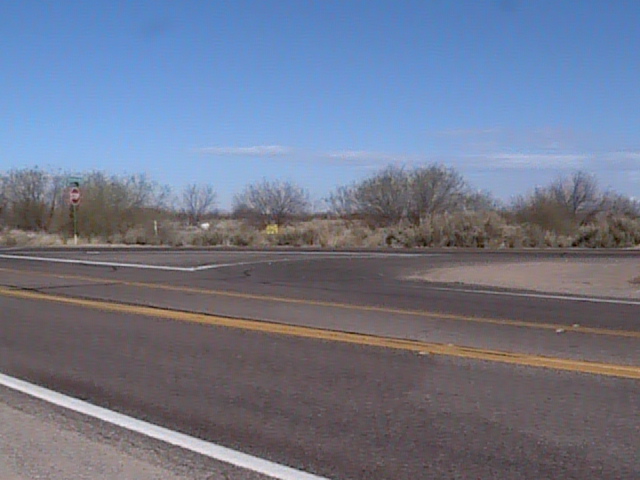
Birdlife of the "Thrasher Spot" at Baseline Road/Salome Highway:
Le Conte's Thrasher
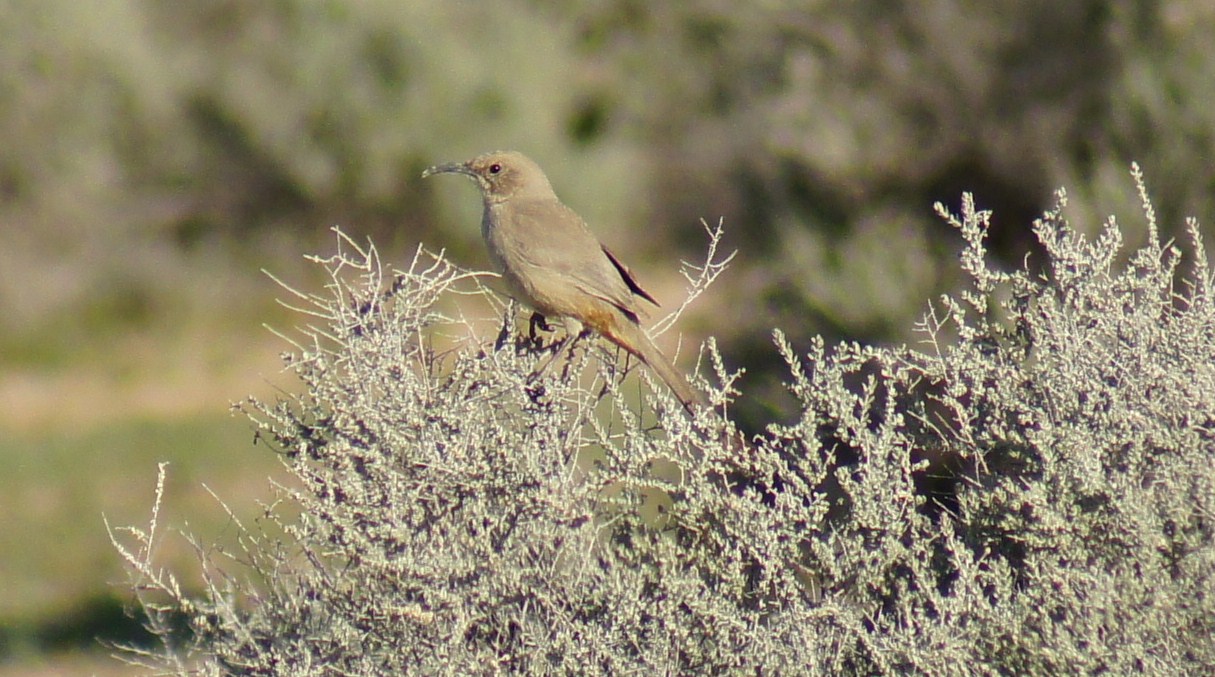
Crissal Thrasher
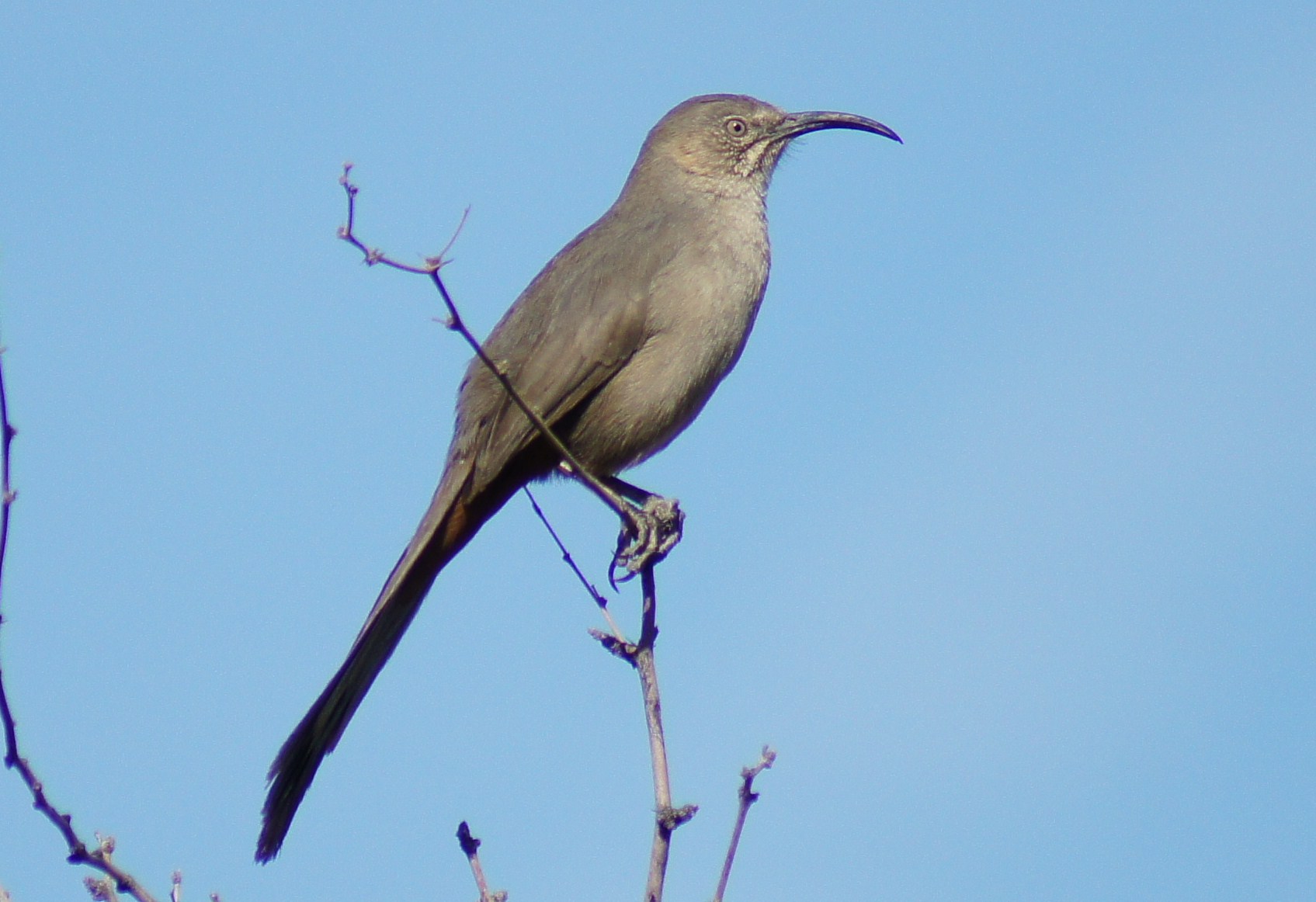
Bendire's Thrasher
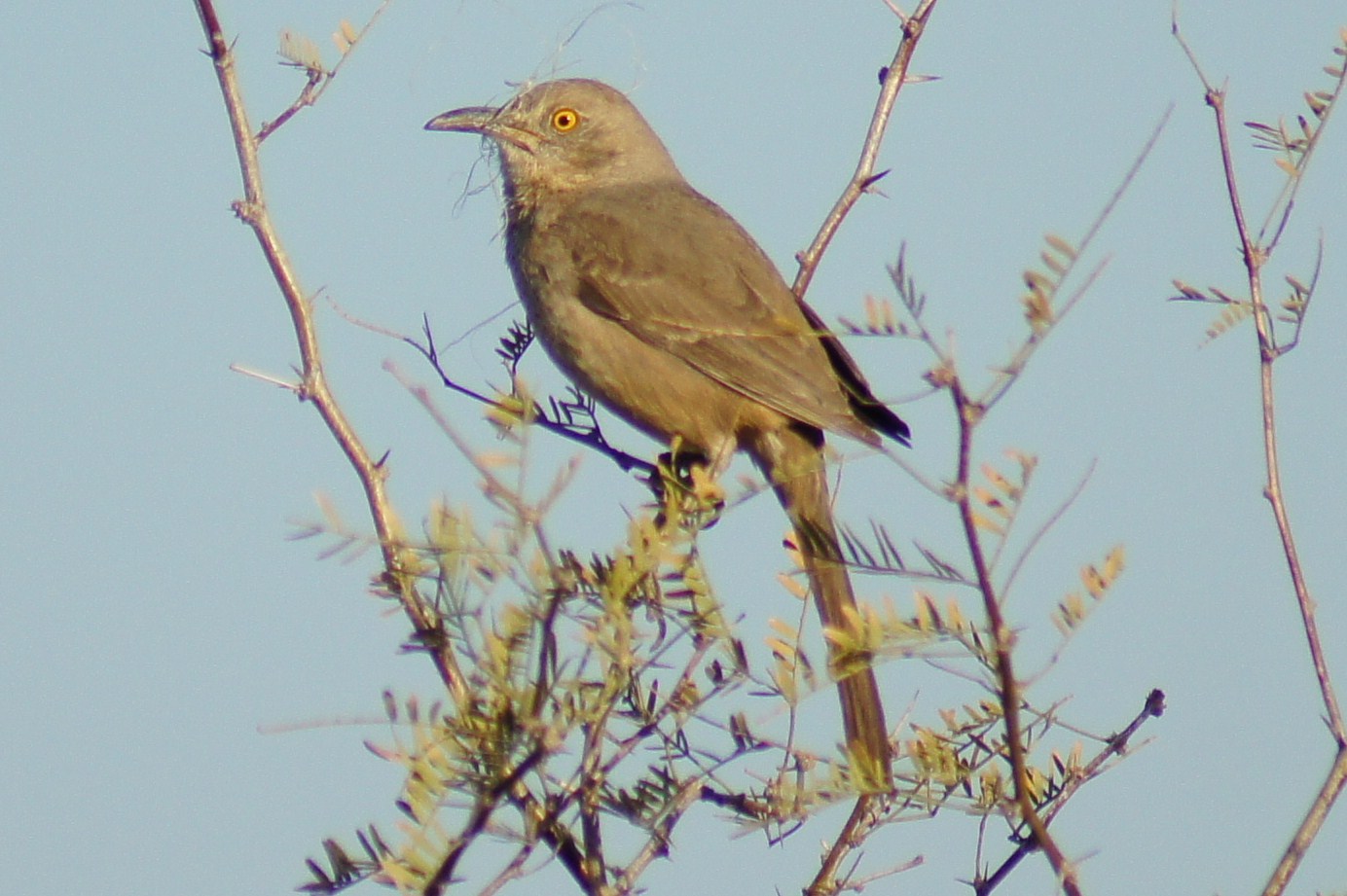
Sage Thrasher
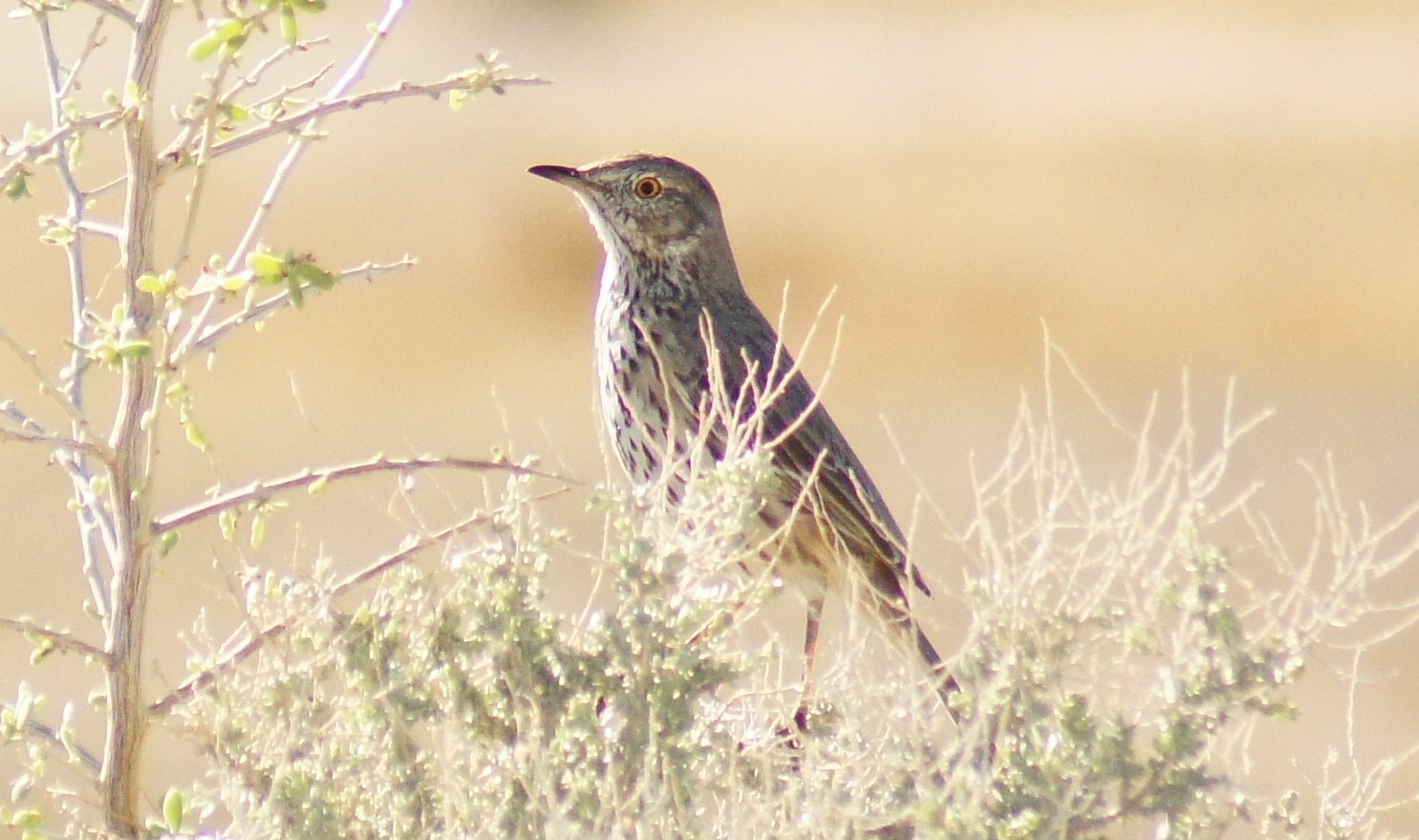
Sagebrush Sparrow
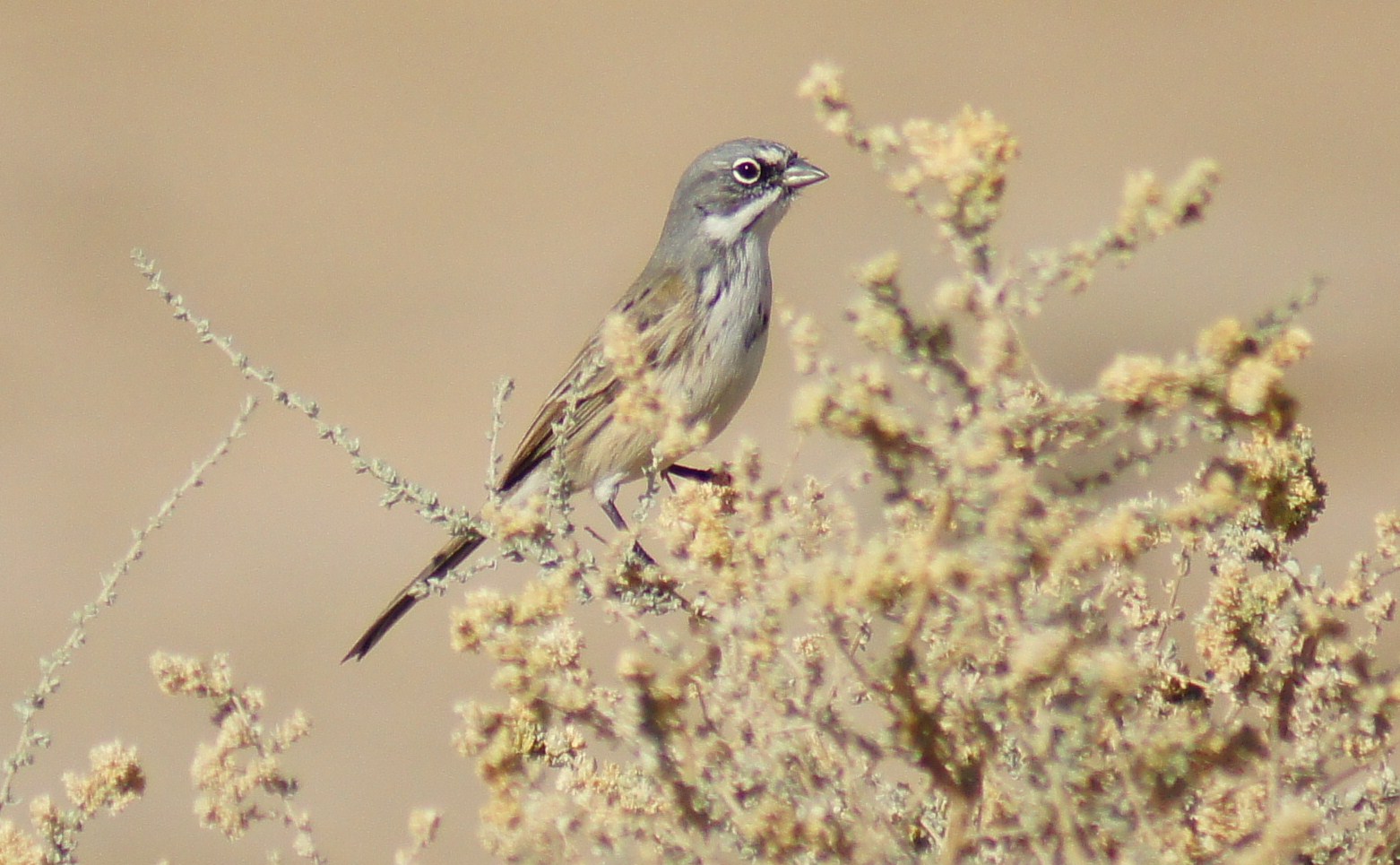
Bell's Sparrow
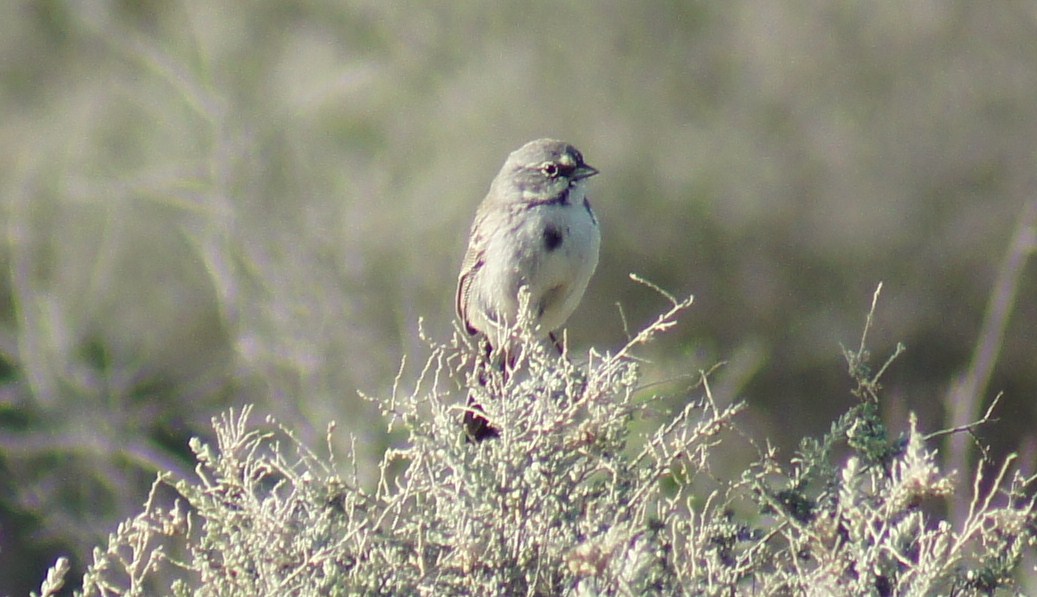
Back to Area 8-Arlington to Gila Bend | 